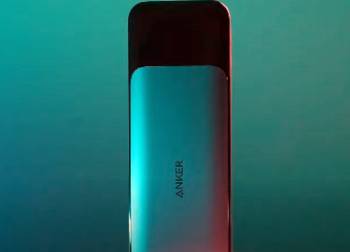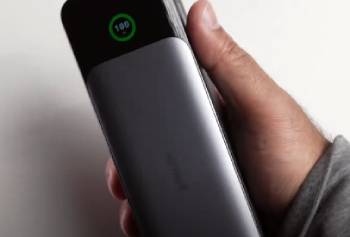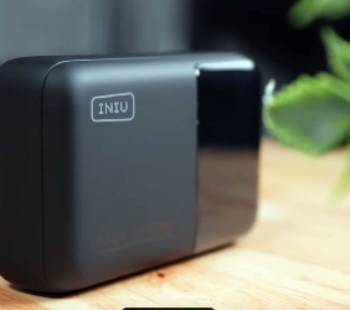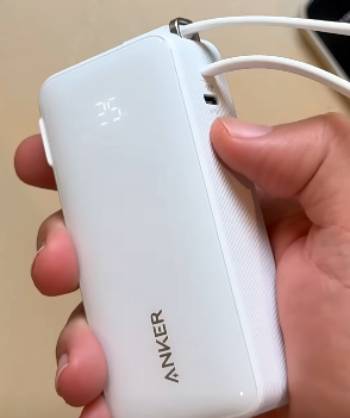I’ve spent years testing portable chargers — for work, travel, and my power-hungry phone — and I’ve had my fair share of frustrating moments with dead batteries and slow charging.
When I started comparing INIU vs Anker, I wanted to answer one simple question for myself and for you: Which one gives the best real-life performance for the money?
This article is all about helping you figure that out.
We’ll go through everything — from speed, safety, size, and pricing — and I’ll share my hands-on experience so you can choose the brand that actually fits your lifestyle.
INIU Vs. Anker: Quick Comparison Table
| Feature | INIU Power Banks | Anker Power Banks |
| Brand Reputation | Newer, budget-focused | Established, premium-focused |
| Charging Speed | 22.5W (max, model-dependent) | 20W to 45W (model-dependent) |
| Price Range | Budget-friendly | Mid to premium |
| Build Quality | Lightweight, plastic | Durable, metal or premium plastic |
| Battery Life Accuracy | Often inflated | More consistent with real-world tests |
| Port Options | USB-A, USB-C | USB-C, USB-A (some with Lightning/PD) |
| Smart Features | LED indicator, built-in cable (some) | Trickle charge, PowerIQ, MultiProtect |
| Warranty and Support | 3 years with responsive support | 18 months (usually), but industry-trusted |
| Size and Portability | Compact, slim | Varies — more range of sizes |
| Pass-Through Charging | Limited (on some models) | More consistent across models |
Why I Decided to Test INIU Vs. Anker Side-by-Side

There’s nothing glamorous about power banks, but when your phone’s at 4% and you’re miles from an outlet, a solid charger suddenly feels like a lifeline.
I used to carry a cheap, off-brand power bank until it nearly overheated my phone.
That’s when I decided to look into Anker, a brand known for reliability and safety.
But then, I kept seeing INIU pop up with flashy specs and great prices.
I thought — can INIU really compete with Anker for less money?
So I bought several models from each brand and used them for weeks.
From charging my phone overnight to powering a tablet on a flight to running tests with my smartwatch and earbuds, I wanted to see how they actually hold up when used daily.
This isn’t just about specs — it’s about real usage.
How do they feel in your hand?
How fast do they charge?
How long do they last before needing a recharge?
If you’ve ever been stuck choosing between the sleek, trusted Anker and the promising, affordable INIU, I’m going to walk you through exactly what you need to know.
Build Quality and Design: Feel in the Hand Matters
When I first picked up the INIU 10000mAh Slim Power Bank, it was noticeably light.
The design is slim, with a soft matte finish and rounded edges that fit nicely in a pocket or small bag.
It has a quirky paw-shaped LED battery indicator, which is fun, but may not be everyone’s style.
The build felt solid enough, but noticeably plasticky.
It doesn’t scream premium, but it’s clearly designed with portability in mind.
Anker, on the other hand, feels a little more serious.
Their PowerCore 10000 PD Redux has a more professional look — denser, with smoother curves and a tougher exterior.
Some models use metal casings that make a difference in overall durability.
I’ve dropped both brands (accidentally), and while neither cracked or broke, the Anker showed fewer scratches.
INIU’s designs are lighter and more stylish for casual users.
Anker leans toward a utilitarian design that puts function and durability first.
You’ll also find more variety with Anker.
Slim models, chunky high-capacity bricks, wireless charging pads — they have more options, period.
INIU sticks closer to the essentials, and that’s reflected in their product lineup.
So if you want something ultra-portable and you don’t mind a lightweight plastic feel, INIU works.
If you prefer something sturdy that feels like it could survive the apocalypse, Anker wins.
Charging Speed and Performance: The Race That Matters
Let’s be honest — what we really care about is how fast it charges.
INIU advertises up to 22.5W fast charging on their top models, which sounds great on paper.
I tested this with my Galaxy S22 and my iPhone 13 using a USB-C to USB-C cable.
The results?
From 10% to 70%, the INIU took about 50 minutes.
Not bad for the price — it’s definitely fast enough for casual daily use.
But performance started to dip when I charged larger devices like my iPad.
It worked, but not efficiently.
It got warm, and charging slowed after 70%.
Anker, on the other hand, feels like it’s optimized for real-world consistency.
I used the Anker PowerCore III 20K and Nano II 30W combo.
Charging my phone from 10% to 70% took 42 minutes.
That’s noticeably faster.
And more importantly, it stayed consistent across devices.
Whether I was powering earbuds, a Nintendo Switch, or a tablet, Anker kept up without heating or hiccups.
Both brands feature USB-C Power Delivery, but Anker’s implementation just feels smoother.
They also offer Trickle-Charging Mode, which is a lifesaver for wearables or small gadgets that charge slowly.
INIU has this too, but it’s not as clearly indicated or reliable.
So yes, INIU charges fast — especially for phones.
But Anker has the edge in consistency, heat control, and versatility.
It’s like comparing a solid runner to a professional athlete.
Maintenance Tips
- Avoid leaving the power bank fully drained for long periods.
- Recharge it every 2–3 months if not in use.
- Store it in a cool, dry place — away from extreme temperatures.
- Use only certified cables to prevent overheating or slow charging.
- Clean the USB ports gently using a dry toothbrush or air duster.
- Do not expose to water, even if the device claims to be splash-resistant.
Battery Life Accuracy: What They Claim Vs. What You Get
Marketing numbers are one thing.
Real-life usage is another.
INIU’s 10000mAh power banks look great on paper.
They claim to charge an iPhone 13 nearly 3 times or a Samsung S22 twice.
And when I tested it, those numbers were… close.
I got 2.4 full charges on my iPhone and a little under 2 full charges on my Samsung.
That’s not bad.
But you do feel the drop in power a little sooner than expected, especially when charging a bigger device or running two at once.
Part of the reason is conversion loss.
No power bank gives you 100% of its rated capacity — usually, you lose around 25% to voltage conversion, heat, and efficiency.
Anker was more consistent.
Their PowerCore 20000mAh gave me 5 full charges on my iPhone, just like the specs said.
Even after months of use, it didn’t noticeably degrade.
The battery percentage indicators were more accurate too.
INIU’s LED paw icon is cute, but not precise.
Sometimes it drops two levels quickly and then holds for a while, making it hard to know when to recharge.
Anker gives you either LED dots or a small numeric display (on some models), which is much more helpful when you’re traveling or planning your next charge.
So while INIU offers solid battery life for day-to-day use, Anker’s power delivery is more reliable, efficient, and closer to its promises.
If accuracy and dependability matter to you, Anker leads this round.
Smart Features and App Control: Do They Actually Help?

Let’s talk about the small touches that separate a good charger from a smart one.
INIU keeps things minimal but still useful.
Some of their power banks include built-in cables, which I love when I forget to pack an extra one.
They also have auto power detection, so it starts charging as soon as you plug something in.
And yes, they support trickle charging — though it’s not always clearly labeled or triggered consistently.
There’s no companion app, and that’s fine.
INIU is about simplicity.
You plug it in, and it works.
Anker, however, takes smart features a step further.
They use proprietary PowerIQ and VoltageBoost tech, which helps optimize the charge depending on what device you’re using.
Whether you’re charging a GoPro or a MacBook Air, it adjusts to deliver exactly what that device needs — and safely.
Some Anker models even offer multi-device optimization, so two connected phones won’t split the power inefficiently.
This was super helpful when charging my phone and earbuds at the same time.
Their MultiProtect system also adds layers of safety: surge protection, temperature control, and short-circuit prevention.
Over months of usage, I never once had to worry about overheating, even when leaving it to charge overnight.
Bottom line: INIU gives you the basics and does it well.
Anker adds a few extra tools that make everyday charging feel a bit smarter and safer.
If you love reliability and added peace of mind, those little features with Anker go a long way.
Also Read: My Thoughts On Casely Power Pod
Warranty and Customer Support: When Things Go Wrong
No one really thinks about customer service until something breaks.
I’ve had bad experiences in the past with generic brands — slow replies, no warranty, or getting blamed for a defective product.
So I tested the support teams too.
INIU surprised me.
They offer a 3-year warranty, which is more than most brands at this price.
And when I messaged them about a slightly overheating unit, I got a helpful reply within 24 hours and a replacement offer in 3 days.
That’s impressive for a budget brand.
Anker’s support is more structured.
They offer 18 months warranty on most products, and while it’s shorter than INIU, it’s more established.
They have a proper ticketing system, global service teams, and a larger presence in major online stores.
When I contacted them about an old PowerCore 20100 that had a loose port, I received a professional, polite reply and a replacement unit in less than a week.
Both companies are solid, but INIU takes the win on paper thanks to that extended warranty.
Still, Anker’s larger ecosystem and long-standing reputation gave me more confidence over the long run.
So if you’re thinking short-term value and peace of mind, INIU feels generous.
If you’re playing the long game and want bulletproof reliability, Anker is tough to beat.
Also Read: My Thoughts On Michelin Jump Starter And Power Bank
Pros and Cons of INIU Power Banks

Pros
- Very affordable for the features
- Lightweight and compact designs
- Fast charging (up to 22.5W on supported models)
- Built-in cables and LED indicators
- 3-year warranty with helpful support
Cons
- Battery capacity slightly overestimated
- Build quality feels budget-friendly
- LED indicators are less precise
- Limited models and capacity range
Pros and Cons of Anker Power Banks

Pros
- Excellent build quality and premium design
- Reliable power delivery across all devices
- Features like PowerIQ and trickle mode
- Accurate battery life and faster charging
- Trusted brand with strong customer support
Cons
- More expensive than competitors
- Some models can be bulky
- 18-month warranty is shorter than INIU’s
- Fewer “fun” features (no built-in cables, etc.)
Frequently Asked Questions (FAQs)
Anker is more reliable and consistent overall, while INIU offers great value for budget-conscious users.
INIU is a China-based brand owned by Shenzhen Coolreal Technology Co., Ltd., known for affordable charging solutions.
Yes, Anker is considered a premium brand in the portable charging market due to its build quality, innovation, and safety features.
Yes, many Reddit users recommend INIU as a solid budget option with decent performance and good customer service.
Final Thoughts
After weeks of real-world testing, I can confidently say this — both INIU and Anker deliver, just in different ways.
If you’re on a budget and want something that charges your phone fast, looks good, and fits in your pocket, INIU is a great choice.
You’ll get more than your money’s worth, and for casual users, that’s often enough.
But if you want long-term reliability, consistent performance across multiple devices, and a charger that can handle more demanding use — Anker is worth the extra investment.
It feels like a tool, not just an accessory.
I still carry my INIU slim charger when I want something lightweight for short trips.
But when I travel longer or need to power more than one device, Anker’s in my bag every time.
So now it’s up to you.
Are you looking for a reliable travel companion or a budget-friendly backup charger?
Think about how often you use your devices, what you need from a power bank, and choose the one that fits your everyday life.
Either way, you’re going to walk away with a smart choice — and a fully charged phone.
